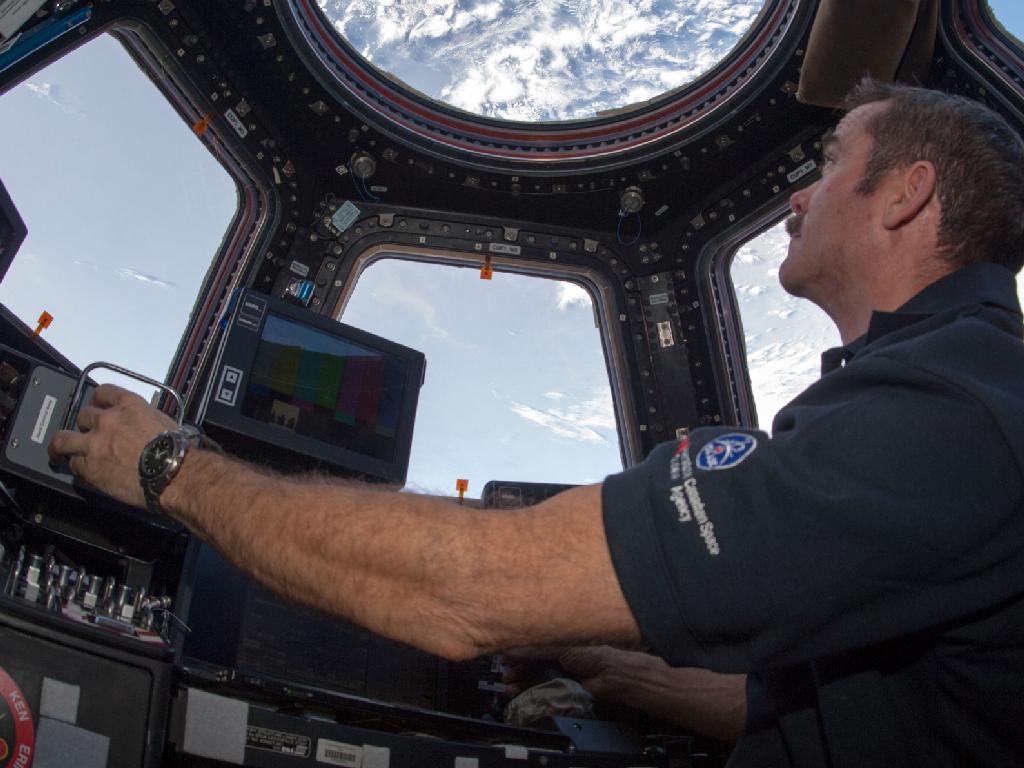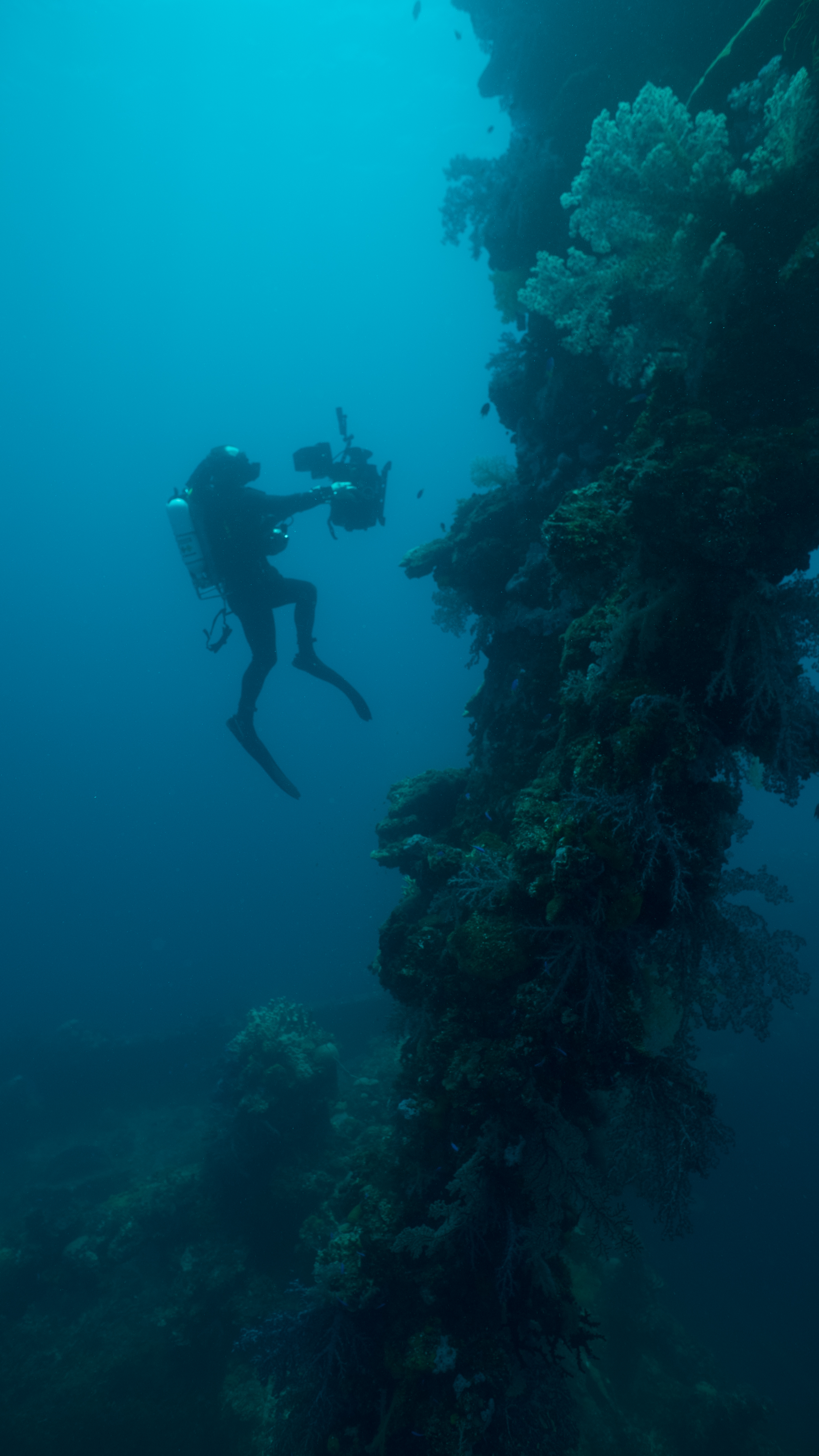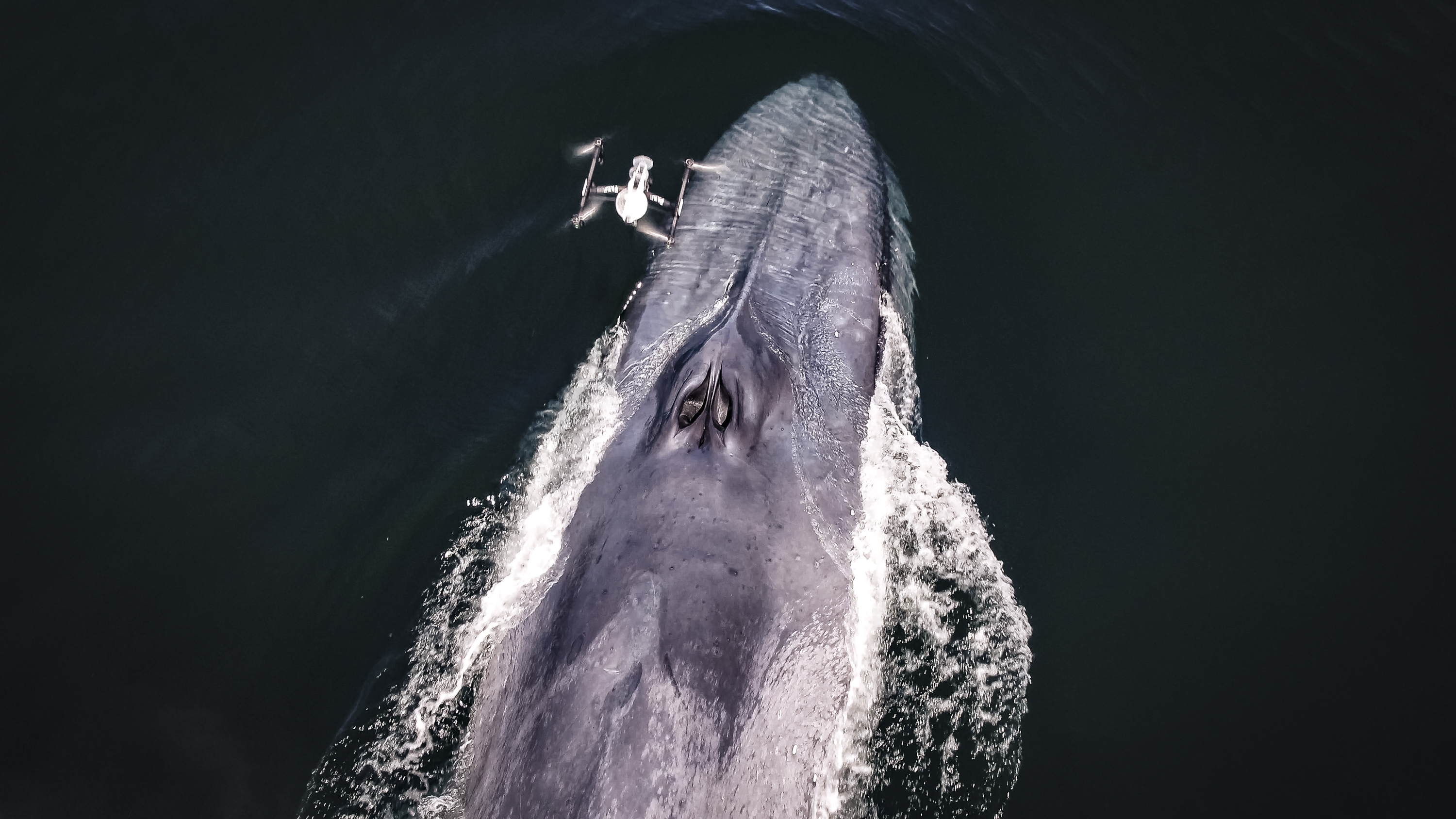NatGeo's 'One Strange Rock' Is the Story of Earth, Told by People Who Left It
The new National Geographic documentary series "One Strange Rock," hosted by the actor Will Smith, is the story of how life survives and thrives on planet Earth. It's told from the point of view of eight astronauts, but having the story of Earth told by people who have left it wasn't always the vision the filmmakers had in mind.
In January, the participating astronauts and some of the show's creators talked to reporters about how that decision to use space travelers as the main storytellers was made, and how it shaped the series.
Each of the 10 episodes in "One Strange Rock" (which premiers March 26 on National Geographic channel) focuses on one astronaut and one fundamental aspect of life on Earth. The lineup of participating space travelers is impressive, and includes Peggy Whitson, who holds the record for the most time spent in space by an American; Chris Hadfield, the Canadian astronaut who, while living aboard the International Space Station, made a now-über-viral-video of himself singing David Bowie's astronaut ballad"Space Odyssey"; Mae Jemison, who was the first African-American woman in space and who has done some equally amazing things since; and Jerry Linenger, who was on board the Russian Mir space station in 1997 when the worst fire in spaceflight history broke out.
At the January media junket, nearly every astronaut who spoke about the series said it managed to capture a little bit of what's known as "the orbital perspective" or "the overview effect," which refers to a greater sense of connectedness to the planet than many astronauts report feeling either during or after their journey to space. (One astronaut even wrote a book about it.) The show's creators say they wanted the overall theme to be the connectedness of all life on Earth, and the astronauts' orbital perspective provided the perfect knowledge pool to draw on.

The orbital perspective
"When [the astronauts] go up, they see the pale blue dot; and we know the Earth isn't flat, we know its round," said Ari Handel, one of the show's executive producers. "That's an intellectual thing. [The astronauts] get something more. All those astronauts, over and over again, they all say the same thing: Something happens that is a moving, spiritual, philosophical experience that's deeper than that intellectual experience. So [in "One Strange Rock"] we use the interconnectedness [of life on Earth] in part to help our audience get a perspective shift like that, so they can look at the world in a different way with fresh eyes kind of in a parallel to how [the astronauts] got to do it."
Most of the eight astronauts agreed that the show captured a little bit of the feeling they had looking down at the Earth from space.
"I think the keyword for me is perspective," Whitson said. "Being away from Earth, and seeing the Earth [from the outside] gives you the perspective that, 'Hey, the Earth is so much bigger than you can imagine!' But then you look at the sky at night, and you see thousands and thousands and thousands of stars with unparalleled clarity, and you recognizing that there's planets out there going around those stars, and [the Milky Way] is just one galaxy of billions, and so then you look back at Earth think, 'Oh, this is small!' And that also gives you a sense of how special [the Earth] is. So, my perspective, I think, is what changed the most [when I went to space]. And that's what I enjoy about this show, is I really think [it helps] convey some of that specialness of our planet."
Get the Space.com Newsletter
Breaking space news, the latest updates on rocket launches, skywatching events and more!

The magnificence of Earth
Can a TV show really capture the experience of going to space? Not exactly — the astronauts agreed there was nothing on Earth that could compare to that experience. But upon returning to Earth, many astronauts work hard to try to convey the sense of connection they feel with the planet from orbit.
That comes from the general experience of seeing the planet from up above, but also from specific things the astronauts could see from that vantage point: how weather patterns could travel over huge distances and affect different parts of the planet at different times; some of the astronauts saw how clouds of dust could blow from the Sahara Desert all the way to the Caribbean Sea. Whitson, for example, described how the different regions of the Earth reflected different colors of light that were so distinct, she could tell which part of the planet she was flying over just by the change in lighting inside the station.
"I think 'One Strange Rock' really does bring out the magnificence of the Earth," Linenger said. "And it's not just looking down at Earth and photos from space, it's the microbes, and it’s the trees sucking up water into the branches, and life coming up and exploding. And when you put that whole fabric together, that's the feeling I felt levitating over a window for 90 minutes and just looking at the magnificence of what we have. And I think this series does that. And I think you could do the same thing that I did where I said, 'Forget naming it, forget trying to understand it, just float and take it in.'"

The notion that viewers should try to appreciate all the features of the show without necessarily understanding all the science was reiterated by some of the other astronauts, including former shuttle astronaut Leland Melvin.
"If you Google [a fact] in that moment, you may know those bits and pieces, but 'One Strange Rock' is putting it all together, it's encapsulating all this knowledge in all these systems and it helps you understand it as an entity, as Mother Earth in her grandeur," Melvin said.
The show is a heady blend of science and emotion, a challenging feat for a filmmaker and something the show's director, Darren Aronofsky, said was part of the reason he wanted to do it.
"When we stumbled on the idea of telling it from the point of view of astronauts, that really sort of opened it up for us and gave us the courage," Aronofsky said. Handel added, "Because we knew we had story tellers who could give us an emotional core around which to hang this other amazing stuff."
Jemison said that even beyond the show, as an astronaut she's had the ability to speak with authority from both an intellectual and emotional standpoint.
"There's a certain validity and credibility in being an astronaut," she said. "And what I've found is [I can] use that validity and credibility as a platform for making it OK to have emotional connections to things, and to feel passion about things in such a way that if you were passionate about it and you didn't have this credibility it might be suspect … I get a little more touchy-feely than I could if I didn't have that platform."
A eureka moment
The series' showrunner, Arif Nurmohamed, said the decision to include astronauts was not part of the plan from the show's outset, but seemed like an obvious choice once it was made.
"One of the first things we wanted to do with this series was find authentic storytellers who would connect to the bigger themes [of the show]," Nurmohamed said. "It seems so obvious now that astronauts have a perspective that allows them to speak in that way, and to speak from the heart and speak from the mind. But it took a little while for us to unlock that."
Nurmohamed said the show creators were able to draw on the "shared bank of experiences" provided by the astronauts, but space station astronaut Nicole Stott said she also appreciated hearing about her colleague's different experiences and different perceptions of the same experiences.
Stott said it's always important to her to emphasize, particularly to young people, that there is no single type of person who can become an astronaut. Referring to a photograph she keeps of the 17 members of her astronaut class, she said, "Every single person in that picture wanted to be an astronaut at some point in their life … but not one of the 17 people in that picture got there the same way. Not one," she said. "And I think the same is true for [the astronauts featured] on this show. And I really do think it brings something [to the show], just like it brings something to our missions. I mean, can you imagine five more of [yourself] on your mission? You're more successful because you have these differences. You have a better time because of it."
When asked what they hoped viewers would take away from the show, the astronauts repeated similar ideas: To look at the planet in a new way, to feel a deeper sense of belonging on planet Earth, and to feel a renewed sense of responsibility to take care of our home planet.
Melvin illustrated his wish with an action: "I want 90 percent of millennials to do this," he said, before dropping his phone on the table, and looking up at the sky.
The 10-episode National Geographic Channel series "One Strange Rock" airs Monday, March 26, at 10 p.m./9 p.m. Central.
Follow Calla Cofield @callacofield. Follow us @Spacedotcom, Facebook and Google+. Original article on Space.com.
Join our Space Forums to keep talking space on the latest missions, night sky and more! And if you have a news tip, correction or comment, let us know at: community@space.com.

Calla Cofield joined Space.com's crew in October 2014. She enjoys writing about black holes, exploding stars, ripples in space-time, science in comic books, and all the mysteries of the cosmos. Prior to joining Space.com Calla worked as a freelance writer, with her work appearing in APS News, Symmetry magazine, Scientific American, Nature News, Physics World, and others. From 2010 to 2014 she was a producer for The Physics Central Podcast. Previously, Calla worked at the American Museum of Natural History in New York City (hands down the best office building ever) and SLAC National Accelerator Laboratory in California. Calla studied physics at the University of Massachusetts, Amherst and is originally from Sandy, Utah. In 2018, Calla left Space.com to join NASA's Jet Propulsion Laboratory media team where she oversees astronomy, physics, exoplanets and the Cold Atom Lab mission. She has been underground at three of the largest particle accelerators in the world and would really like to know what the heck dark matter is. Contact Calla via: E-Mail – Twitter
